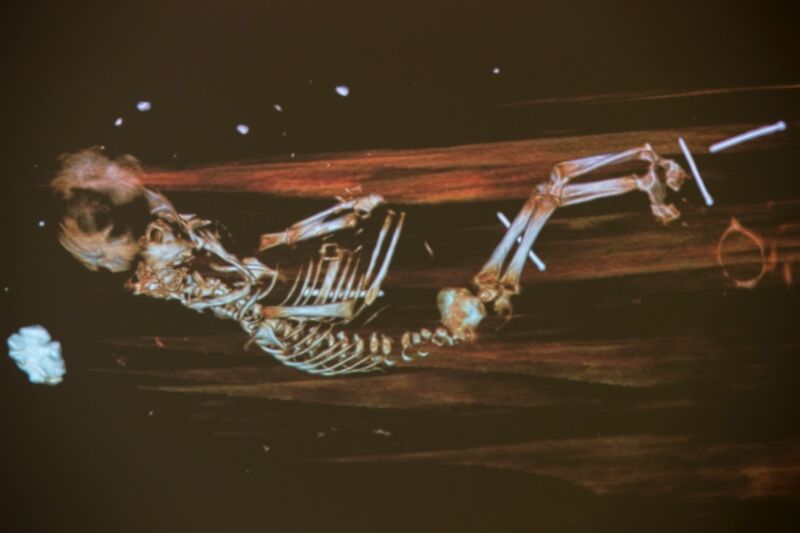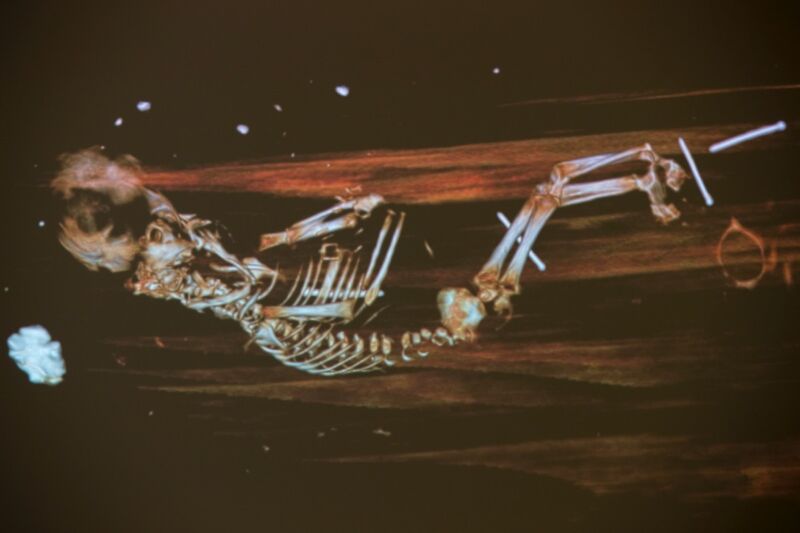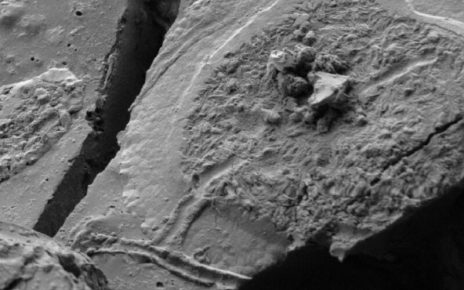
Enlarge / X-ray image of the mysterious fetus found in the coffin of the 17th-century Swedish Bishop Peder Winstrup. (credit: Gunnar Menander)
When Swedish archaeologists in 2015 X-rayed the remains of a 17th-century bishop, they were shocked when the images revealed that the bishop shared his coffin with the remains of a stillborn premature baby. Now, ancient DNA analysis has revealed that the fetus was likely the bishop’s grandson, according to a new paper published in the Journal of Archaeological Science: Reports.
Born in Copenhagen in 1605, Bishop Peder Winstrup was a prominent church figure in Denmark and Sweden during his lifetime, who helped found Lund University in 1666 while deftly navigating the constantly shifting political environment. (He was ennobled by the Swedish king, Charles X Gustav, when his diocese passed from Danish hands in 1658.) Winstrup died in late December 1679 and was buried in Lund Cathedral in January 1680. When his coffin was opened in the early 19th and 20th centuries, the body was remarkably well-preserved.
So when the curators of the Lund University Historical Museum heard, in 2012, that the bishop’s coffin would be moved to a new burial site outside the cathedral, they joined with scientists in a multidisciplinary collaboration to study the bishop’s remains before they were reinterred. The body was X-rayed and CT-scanned, along with the bishop’s clothing, various artifacts, and plant and insect remains.





